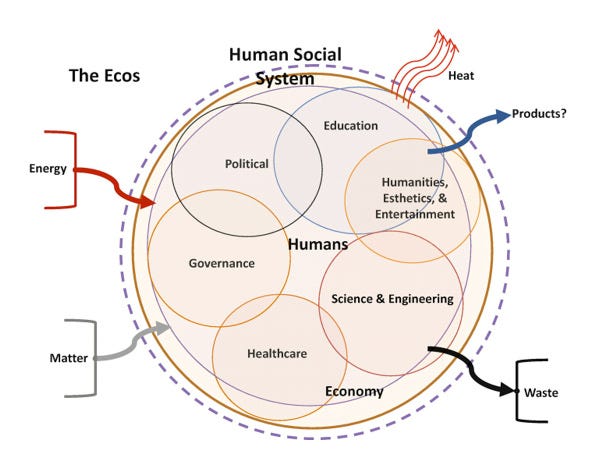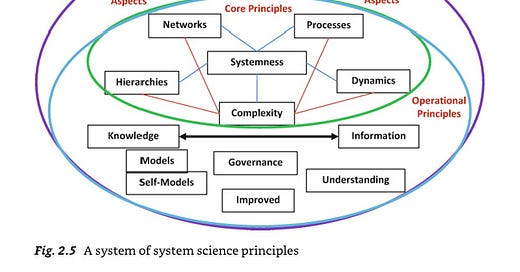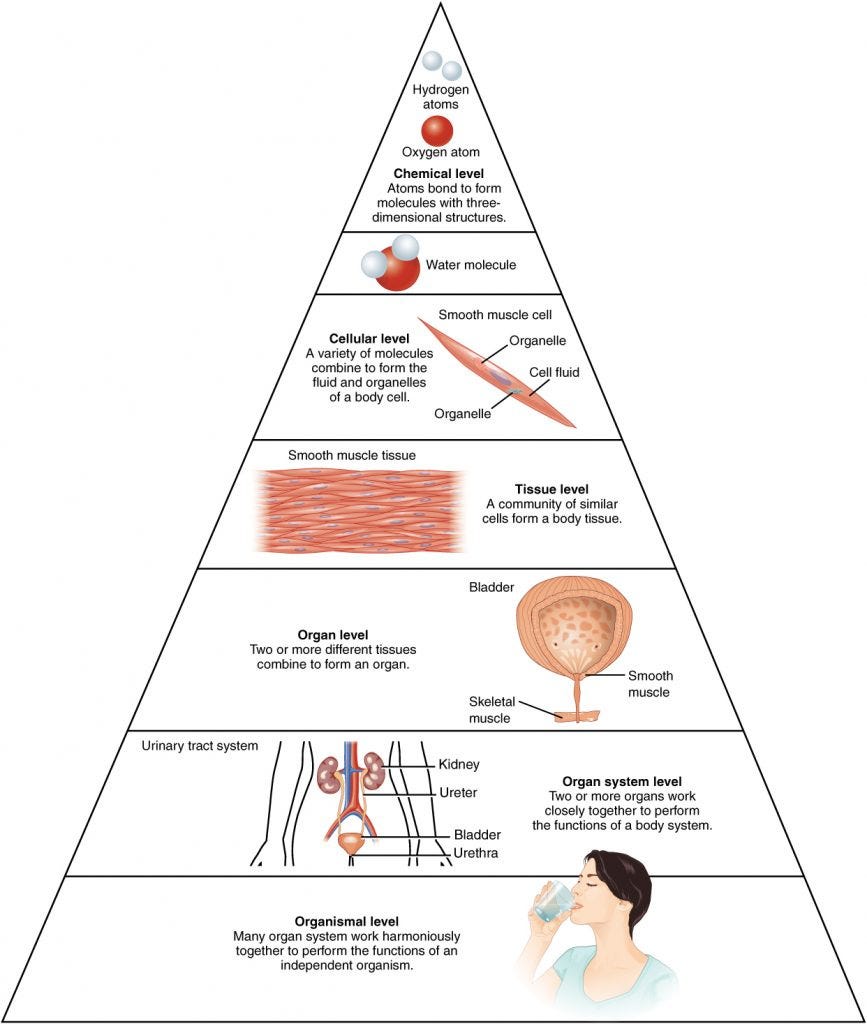Over the next few months I’ll be introducing one new principle of systems science per week. These principles were identified and defined by George Mobus and Michael Kalton in their introductory textbook Principles of Systems Science.
Before diving into the first principle, let’s talk briefly about what scientific principles are and why we need them.
Principles of Science
A scientific principle is a regular consequence of nature operating according to laws. For instance, Archimedes’ principle states that when you put an object in water, the amount of water moved by the object is equal to the amount of force that the water exerts on the object.
The 12 principles of systems science identified by Mobus and Kalton apply to all systems. Together, they provide a potential unified theoretical framework for all of systems science. Practically, having a set of principles helps us know what to look for when analyzing a system we’re interested in.
It's important to keep in mind that this is just one set of possible principles that I’m focusing on because this textbook was my introduction to the world of systems science. I believe they are presented in a way that makes them especially accessible and useful. The authors emphasize that there are more principles to be discovered. Others have proposed different sets of core principles for systems science.
Systemness
The first principle of system science asserts that everything in the observable universe is a system. A system can be defined as a set of things that are connected in such a way that they produce a pattern of unique behavior over time.
“Systemness” can be understood as the set of essential attributes that make up any system.
Stars possess brightness, they burn brightly due to fusion. People possess kindness, they act kindly because social altruism is mutually beneficial. Trees possess tallness, they grow large and create canopies as they optimize for receiving sunlight.
Stars, people, trees, and everything else we can see possess systemness, the quality of being a system. Some of the essential attributes found in all systems are internal components, interactions between those components, boundaries, and a surrounding environment.
The fact that everything observable can be understood as a system is important. It means that we can find common properties and patterns of behavior that occur in every system. If we can conceive of a science focused on understanding systems in general rather than a specific type of system, we will have developed a single key that opens many doors.
Analysis and Synthesis
Systemness is a recursive property, meaning that systems can be understood through either analysis or synthesis.
Analysis involves understanding a system by breaking it down into its constituent parts, the functions of those parts, and the relationships between the parts. Each component can be understood simultaneously as a subsystem of the greater system, and as its own system composed of even smaller subsystems.
For instance, a person can be analyzed based on…
MRIs and EEGs to evaluate brain activity
Blood samples to assess vitamin and hormone levels
X-rays to assess the health of internal organs
A microscope to examine individual cells.
Synthesis involves understanding the function of a system in terms of its place in a larger whole.
For instance, a synthesized understanding of a person might be based on…
Their relationship with their family and friends
Their job, what they produce and consume within the economy
Their communities, both physical and digital
Their treatment of other animals and the environment
Their participation in politics and social activism

Analysis and synthesis tell us very different types of information. We need both to create a full picture and gain systemic understanding.
The star, the tree, and you and me can each be analyzed and understood in isolation, by being broken up into their constituent parts. They can also be understood using synthesis to see how they interact with the other systems around them.
The largest star in our solar system provides energy and heat that allows both trees and humans to flourish. Trees take in sunlight, provide oxygen to humans and absorb CO2 from the atmosphere. Humans sunbathe and use trees to seek shade. In the winter, when the months get colder, we’ll cut down trees and burn them as a substitute form of sunlight.
The traditional scientific method relies heavily on analysis to explain the behavior of systems. Systems science aims to fill this gap by introducing rigorous methods for gaining a holistic understanding that accounts for not only the contents of a given system, but also the interaction the system has with other systems and its environment.
Next week I’ll look at Principle #2 which states that all systems can be seen as processes organized as hierarchies.
Here are a few prompts for reflection and discussion:
What systems are essential in making you who you are?
What systems are you a part of and how do you interact with them?
Can you think of anything that is not a system?







"Can you think of anything that is not a system?"
Great question.
I can think of the English string "not a system", so in that sense, I am thinking of something that "is", "not a system".
Does (what part of) that count as a System?
<3 how clear, crisp, and concise your writing is!